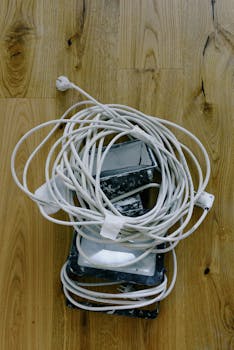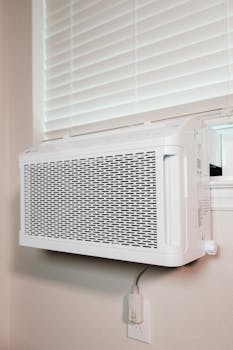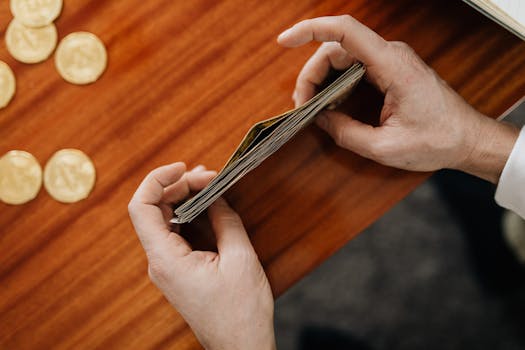Household Economy
DIY Cleaning Products That Are Cheap and Effective for Every Home
Try these DIY cleaning products for an affordable, chemical-free way to keep every room sparkling. Easy-to-follow recipes, simple tools, and practical tips help you create safe blends you can trust.
Advertisement
If you’ve stared at the cleaning aisle wondering whether you really need another pricey bottle, you’re not alone. Many people opt for diy cleaning products that use simple household items and save money with every spray and wipe.
Choosing cost-effective solutions helps stretch your budget and cuts down on unnecessary chemicals. This way, you stay in control of your environment and know exactly what you’re bringing into your living spaces.
Discover practical, tested recipes and tips that shift the way you clean. Explore real-world examples and clear checklists to help you confidently make your own cleaning products at home.
Mixing Your First Batch: The Basics for All-Purpose Cleaners
Getting started means gathering a few staples like vinegar, baking soda, and castile soap. You’ll mix and match ingredients for different rooms and jobs, following exact recipes and steps.
Smart substitutions and a consistent ratio deliver results you can trust. Always label your bottles and jot down dates, mimicking the routines of seasoned home care pros for reliability.
Building the Foundation: Measuring and Combining
Measure a half cup of white vinegar and add to two cups of water in a spray bottle. Add ten drops of essential oil if you want fragrance. Shake well.
This mixture works for countertops, tiles, and most bathroom surfaces. Spritz on, let sit for a minute, then wipe using a clean microfiber cloth. Store away from heat.
Write the exact recipe on masking tape and stick it to the bottle as a future reference so you avoid mistakes next time you mix a new batch.
Scenario: “I Ran Out of Store Cleaner!”
Katie comes home after a spill and finds her store cleaner empty. She grabs vinegar, baking soda, and water, mixes them, and wipes up the mess in under five minutes.
Her spouse walks in, surprised at the lemon scent, and asks for the “store” brand. Katie points to her homemade label and hands them the spray bottle with a grin.
This quick turnaround helps the family avoid a trip to the store or spending extra, opening the door for more diy cleaning products in their home routine.
| Product | Main Ingredients | Cleaning Power | When To Use | Takeaway |
|---|---|---|---|---|
| All-Purpose Spray | Vinegar, Water, Oil | Great for daily messes | Countertops, bathrooms | Mix fresh every week for best results |
| Scrub Powder | Baking soda, salt | Tough stains & grout | Kitchens, sinks | Store sealed, use a spoon to sprinkle |
| Glass Cleaner | Vinegar, water, alcohol | No streaks, quick dry | Mirrors, windows | Spray lightly, buff with dry cloth |
| Disinfectant | Hydrogen peroxide | Germ control | Handles, cutting boards | Allow 60 seconds before wiping dry |
| Floor Cleaner | Castile soap, water | Gentle, safe shine | Tile, sealed wood | Don’t soak wood; mop lightly |
Simple Steps for Kitchen and Bathroom Success
Targeting greasy stoves and grimy sinks is easy if you know which mixtures to use. Start with surface-specific blends and work top-to-bottom to maximize speed and impact.
Keep these mixtures separate—a scouring paste for sinks, a degreaser for stoves, and a gentle spray for counters. It’s a straightforward process when you commit to tidy habits daily.
Cleaning Checklist: Kitchen Routine
Gather all diy cleaning products before starting. Wipe counters with all-purpose spray. Sprinkle baking soda in the sink; scrub and rinse. Tackle stove spills with dish soap and hot water.
Finish by shining faucets with a vinegar-soaked cloth. These actions mimic the efficiency of restaurant prep lines—set up, use, sanitize, and reset for next time.
- Mix spray bottles at night to let scents mellow and reduce strong odors during use the next day.
- Segment your cloths for each zone—kitchen, bathroom, windows—to prevent cross-contamination and stains.
- Test a small spot before cleaning a whole surface to prevent unwanted damage from acids or abrasives.
- Pour hot water down drains after cleaning to flush away residue and deodorize pipes without harsh chemicals.
- Refill solutions weekly to maintain potency and prevent settling or separation, like pros who batch clean supplies in advance.
Once you see your kitchen shine, it sets a momentum for the rest of your home. Clean bites, clear prep spaces, and organized routines lead to lasting low-stress upkeep.
Cleaning Checklist: Bathroom Routine
Close the shower curtain and run hot water for five minutes to create steam. This softens soap scum and speeds up scrubbing with baking soda paste.
Use separate sponges for the toilet, sink, and tub. Apply a vinegar spray after scrubbing, wait five minutes, then rinse thoroughly with warm water from a cup.
- Wipe mirrors using a dry microfiber cloth after applying glass cleaner for streak-free reflections.
- Hang up used towels to dry out the room and minimize mildew growth.
- Spritz a few drops of lavender oil in the toilet tank to refresh every flush naturally.
- Swap toilet brush holders weekly, rinsing them with a dash of hydrogen peroxide to deter bacteria.
- Replace sponges every two weeks, following the rhythm of pro cleaners who avoid residue buildup.
Small touches add up—like folding extra cloths in a basket or labeling drawers for specific cleaning tools. These habits mean less searching and no wasted steps.
Saving Money Without Sacrificing Cleanliness
You can reduce household expenses and still keep your home immaculate by sticking with diy cleaning products. Avoid costly marketing gimmicks and stick to proven recipes and schedules that deliver cleanliness without the markup.
Savvy cleaners buy basics like vinegar, baking soda, and castile soap in larger quantities, storing extras in a cool, dry space and drawing from their stash as needed throughout the year.
Bulk Buying and Smart Storage
Buy a gallon jug of vinegar for less than a few ready-made bottles of cleaner. Store dry goods like baking soda in airtight jars, labeling them for easy access in the cupboard.
Make a monthly shopping list to note when you’re running low. This mirrors smart kitchen management, ensuring you never have to make an emergency run for essential ingredients.
Keeping a small bin with your mixing accessories—funnels, measuring cups, and spare nozzles—prevents delays and keeps frustration low during prep time.
Tracking Real Savings Month by Month
Joey logs all purchases from the cleaning aisle for two months and compares totals with the cost of diy cleaning products. His log reveals his homemade blends save him about $25 a month.
He prints out a basic recipe sheet and tapes it inside a cabinet for quick reference. Joey’s process is repeatable and visible, so his household benefits too.
This approach lets Joey plan for bulk sales, switching out big-brand labels for ingredient jugs. His receipts show clear, measurable progress in household spending.
Troubleshooting Common Cleaning Challenges
Homemade solutions work best when you adapt to specific challenges, like sticky residues, water stains, or dull tile. Avoid blanket cleaning—instead, track and tackle each mess based on what caused it.
Start with a test patch and note whether the issue fades, lightens, or needs reapplication with a slightly stronger mix. Record your best blends in a notebook for next time.
Sticky Messes and Stubborn Spots
Use a mix of equal parts vinegar and hot water to tackle sticky areas, such as spilled juice under the kitchen table. For stubborn, dried-on spots, let the solution soak for a full minute before wiping.
Scrape gently with a plastic spatula, pulling residue away from seams or grout lines. Persistence and small tools, like old credit cards, keep delicate surfaces safe as you work on problem areas.
Blot, don’t scrub, on painted walls to avoid streaks. Dab with a damp cloth, then repeat if the spot lingers, all while monitoring for wear and backing off if paint lifts.
Water Marks and Soap Scum
Spray glass and mirrors with a blend of vinegar and rubbing alcohol for streak-free shine. Follow with a dry cloth and firm, circular motions until marks fade.
For tubs, sprinkle baking soda onto a damp sponge and spread in circles, focusing on soap scum build-up. Rinse with plenty of hot water and dry with a towel to prevent spotting.
Keep bathroom air dry by opening a window after cleaning to slow mildew and maintain the results longer. This future-proofs surfaces by maintaining circulation year-round.
Adding Scents and Personal Touches to Your DIY Mixtures
Homemade does not mean bland. Add essential oils, citrus peels, or herbal infusions to your diy cleaning products for a result that freshens, disinfects, and feels customized for your home.
Mix and match scents for specific moods—lemon energizes, lavender calms, and eucalyptus clears away stuffiness. Rotate every few months to prevent “nose blindness” and keep things lively.
Crafting a Citrus Infusion
Place orange and lemon peels in a mason jar, cover with white vinegar, and let steep for a week. Use this mixture for extra shine and a burst of fresh fragrance on kitchen counters.
Strain and dilute the liquid 1:1 with water for use in most spray bottles. This simple tradition repeats across generations and regions, always yielding uplifting results for the whole household.
Refresh your label with each new batch and jot down the date, so you spot when bottles need a refill. This habit mimics the steady creativity of skilled homemakers everywhere.
Using Herbal Additions Safely
Add ten drops of tea tree oil to your all-purpose blend for antibacterial effects on light switches and handles. Use mint leaves in floor mops for a cooling summer vibe that pets appreciate.
Remind kids and guests which bottles are scented and which are not. A quick color-coded sticker system on each bottle prevents mix-ups and encourages curious helpers to join in safely.
Keep all unscented test batches separate for allergies or sensitivities, noting “unscented” in bold marker on the label to remind everyone in the home.
Frequently Asked Questions
What’s the best way to store homemade cleaning products?
Store homemade products in clearly labeled, airtight containers away from heat and direct sunlight. Mason jars, recycled spray bottles, or food-safe plastic containers all work. Mixing in small batches reduces waste and keeps solutions effective.
Can essential oils improve cleaning power in DIY products?
Essential oils can add antibacterial and antifungal properties to certain recipes. Always use oils sparingly and check that they won’t react with surfaces. Popular choices include tea tree, lemon, and lavender for both scent and light disinfecting.
Are homemade cleaners safe for all surfaces?
Test homemade solutions on a hidden spot before cleaning the whole surface, especially on granite, marble, or wood. Some acidic or abrasive blends can dull or stain sensitive materials, so adjust recipes accordingly and check ingredient compatibility first.
What’s the shelf life of diy cleaning products?
Most water-based spray cleaners last 1–2 weeks when stored properly; dry powders can keep for several months. Add the mix date on each bottle and remake if you see separation, color changes, or unusual odors.
How can I involve kids in homemade cleaning routines safely?
Set clear boundaries and assign age-appropriate tasks, like folding cloths or labeling bottles. Use only non-toxic, unscented blends for young helpers and provide gloves. Turn clean-up time into a regular, supervised routine that builds curiosity and responsibility.





